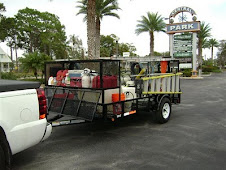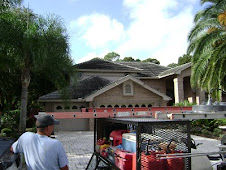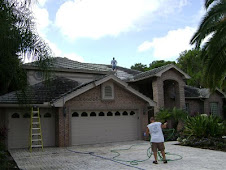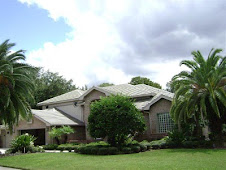Can A Dirty Roof Make You Sick? Read What A Doctor Has To Say!
According to Dr. Victor H Morgenroth, who is a semi-retired adjunct professor at UM
the " dirt " on roofs could actually be causing illness. Here is an excerpt from an article that was written by Dr. Morgenroth.
Having your roof cleaned actually makes sense.
It isn't just aesthetics. While people like to say that dirty roofs lower a property's value and may make it hard to sell, the "dirt" on a roof actually shortens its life span and can even present a health hazard. Furthermore, the "dark stains" on a roof act as a sponge to absorb the sun's heat, which causes a rise in the temperature inside a home or building, creating higher air conditioning bills.
The dirt isn't just dust – It's alive. Some of the black or very dark roof stains are caused by a resilient type of algae,Gloeocapsa magma (a type of blue-green algae commonly found in climates with warm, humid summers). The algae grow in standing water, as well as in our lakes and ponds. The algal spores are carried to our roofs from the water sources by the wind and birds, and then from roof to roof where it grows and feeds on the limestone filler in asphalt shingles and the real dirt on tile roofs maybe in some cases the tiles themselves. Worse still, as the algae grow, they retain water and foster the growth of other roof inhabitants.
The black stains are also very likely to harbor a number of molds or fungi. Unlike algae the fungi on our roofs lacks chlorophyll. They are unable to manufacture food from raw materials. So, it must get nutrition from some form of organic matter. To thrive, these heterotrophs, who used to be called saprophytes, also require a warm, humid environment.
Fungi normally begin their life cycle as an airborne spore that settles on roofs, especially the asphalt-shingle ones. The spores on the northern exposure of the roof stand a better chance of survival because that portion of the roof is the last part to dry after a rain or morning dew. This raises the humidity on the surface of the shingle, thus creating a perfect feeding and breeding ground.
The tar used in roofing is fossilized, dead organic matter -- and an important food source for fungi. Asphalt, at the granule base, is normally consumed first. Once these granules dislodge, accelerated deterioration will occur. Ceramic granules represent the outer hard shell that protects against hail and other falling debris. Ceramic granules protect against damaging UV radiation and insulate the roof against extreme heat. So you can understand that their dislodgement by the growing fungal colonies can be detrimental to our roofs' longevity. Surprisingly, the blue-green algae are also food for the fungi.
While not all mold (fungi) and algae pose a health danger, some are harmful, especially for us older folks, younger children and people who suffer from asthma and respiratory problems. Their spores, which are on your roof, can get inside your home because they end up on the driveway and walkways from rain, and are easily tracked inside. They can even be drawn into our air conditioning systems and eventually populate our ducts.
Different mold species can have varying health effects, but it is important to remember that any excessive mold growth needs to be taken care of, regardless of the species. Any excessive mold growth can lead to increased allergies, toxicity, and house/building structural problems.
According to Dr. Victor H Morgenroth, who is a semi-retired adjunct professor at UM
the " dirt " on roofs could actually be causing illness. Here is an excerpt from an article that was written by Dr. Morgenroth.
Having your roof cleaned actually makes sense.
It isn't just aesthetics. While people like to say that dirty roofs lower a property's value and may make it hard to sell, the "dirt" on a roof actually shortens its life span and can even present a health hazard. Furthermore, the "dark stains" on a roof act as a sponge to absorb the sun's heat, which causes a rise in the temperature inside a home or building, creating higher air conditioning bills.
The dirt isn't just dust – It's alive. Some of the black or very dark roof stains are caused by a resilient type of algae,Gloeocapsa magma (a type of blue-green algae commonly found in climates with warm, humid summers). The algae grow in standing water, as well as in our lakes and ponds. The algal spores are carried to our roofs from the water sources by the wind and birds, and then from roof to roof where it grows and feeds on the limestone filler in asphalt shingles and the real dirt on tile roofs maybe in some cases the tiles themselves. Worse still, as the algae grow, they retain water and foster the growth of other roof inhabitants.
The black stains are also very likely to harbor a number of molds or fungi. Unlike algae the fungi on our roofs lacks chlorophyll. They are unable to manufacture food from raw materials. So, it must get nutrition from some form of organic matter. To thrive, these heterotrophs, who used to be called saprophytes, also require a warm, humid environment.
Fungi normally begin their life cycle as an airborne spore that settles on roofs, especially the asphalt-shingle ones. The spores on the northern exposure of the roof stand a better chance of survival because that portion of the roof is the last part to dry after a rain or morning dew. This raises the humidity on the surface of the shingle, thus creating a perfect feeding and breeding ground.
The tar used in roofing is fossilized, dead organic matter -- and an important food source for fungi. Asphalt, at the granule base, is normally consumed first. Once these granules dislodge, accelerated deterioration will occur. Ceramic granules represent the outer hard shell that protects against hail and other falling debris. Ceramic granules protect against damaging UV radiation and insulate the roof against extreme heat. So you can understand that their dislodgement by the growing fungal colonies can be detrimental to our roofs' longevity. Surprisingly, the blue-green algae are also food for the fungi.
While not all mold (fungi) and algae pose a health danger, some are harmful, especially for us older folks, younger children and people who suffer from asthma and respiratory problems. Their spores, which are on your roof, can get inside your home because they end up on the driveway and walkways from rain, and are easily tracked inside. They can even be drawn into our air conditioning systems and eventually populate our ducts.
Different mold species can have varying health effects, but it is important to remember that any excessive mold growth needs to be taken care of, regardless of the species. Any excessive mold growth can lead to increased allergies, toxicity, and house/building structural problems.
.jpg)
.jpg)
+(Small).jpg)


.jpg)
.jpg)
.jpg)
.jpg)
